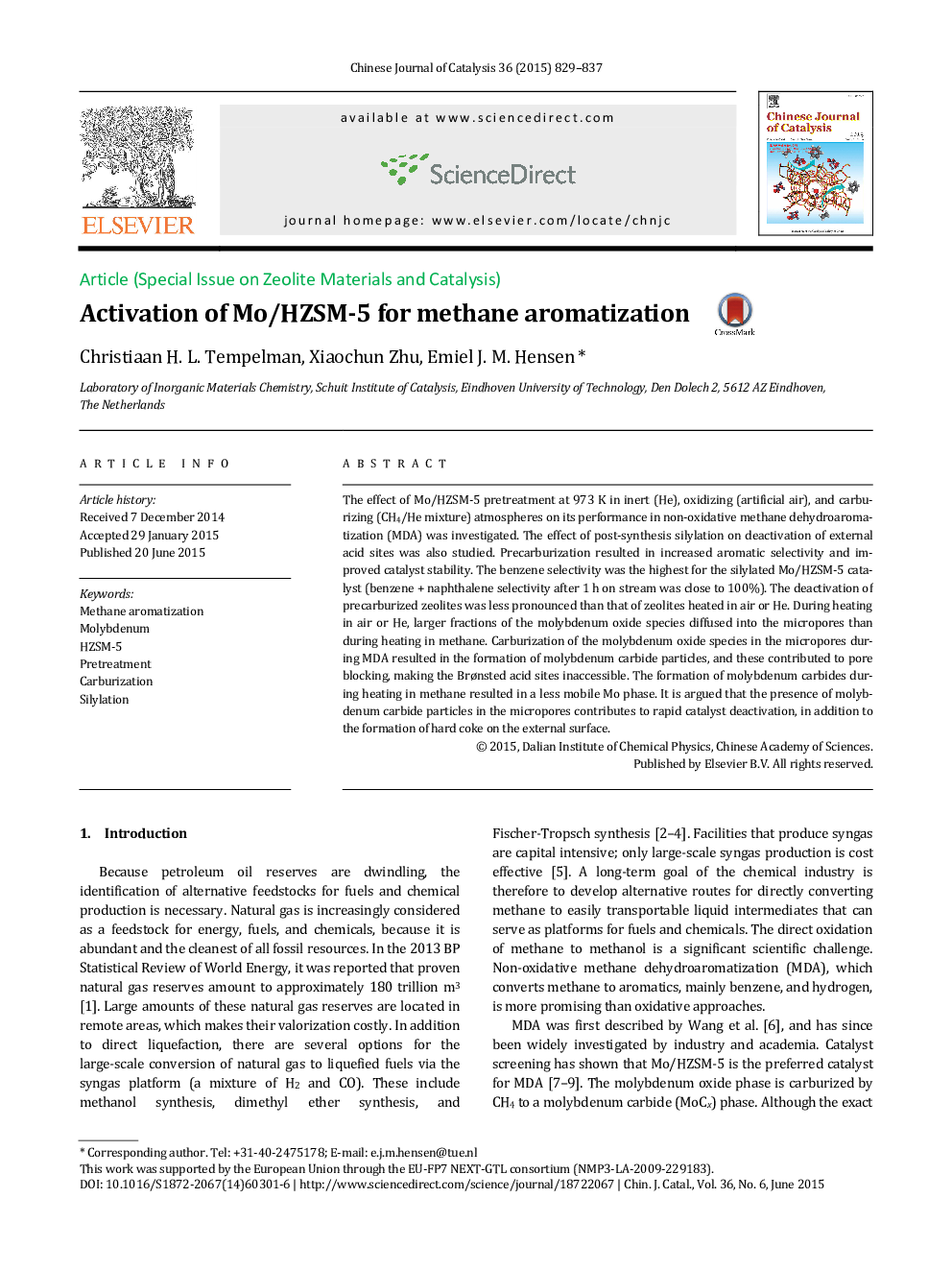| Article ID | Journal | Published Year | Pages | File Type |
|---|---|---|---|---|
| 59832 | Chinese Journal of Catalysis | 2015 | 9 Pages |
The effect of Mo/HZSM-5 pretreatment at 973 K in inert (He), oxidizing (artificial air), and carburizing (CH4/He mixture) atmospheres on its performance in non-oxidative methane dehydroaromatization (MDA) was investigated. The effect of post-synthesis silylation on deactivation of external acid sites was also studied. Precarburization resulted in increased aromatic selectivity and improved catalyst stability. The benzene selectivity was the highest for the silylated Mo/HZSM-5 catalyst (benzene + naphthalene selectivity after 1 h on stream was close to 100%). The deactivation of precarburized zeolites was less pronounced than that of zeolites heated in air or He. During heating in air or He, larger fractions of the molybdenum oxide species diffused into the micropores than during heating in methane. Carburization of the molybdenum oxide species in the micropores during MDA resulted in the formation of molybdenum carbide particles, and these contributed to pore blocking, making the Brønsted acid sites inaccessible. The formation of molybdenum carbides during heating in methane resulted in a less mobile Mo phase. It is argued that the presence of molybdenum carbide particles in the micropores contributes to rapid catalyst deactivation, in addition to the formation of hard coke on the external surface.
Graphical AbstractCarburization of Mo/HZSM-5 prevents dispersion of some of the molybdenum oxide particles into micropores, compared with activation in He or air. The molybdenum carbide particles formed in the micropores cause rapid deactivation of the micropore space, pre sumably by the formation of soft coke on the molybdenum carbides.Figure optionsDownload full-size imageDownload as PowerPoint slide
